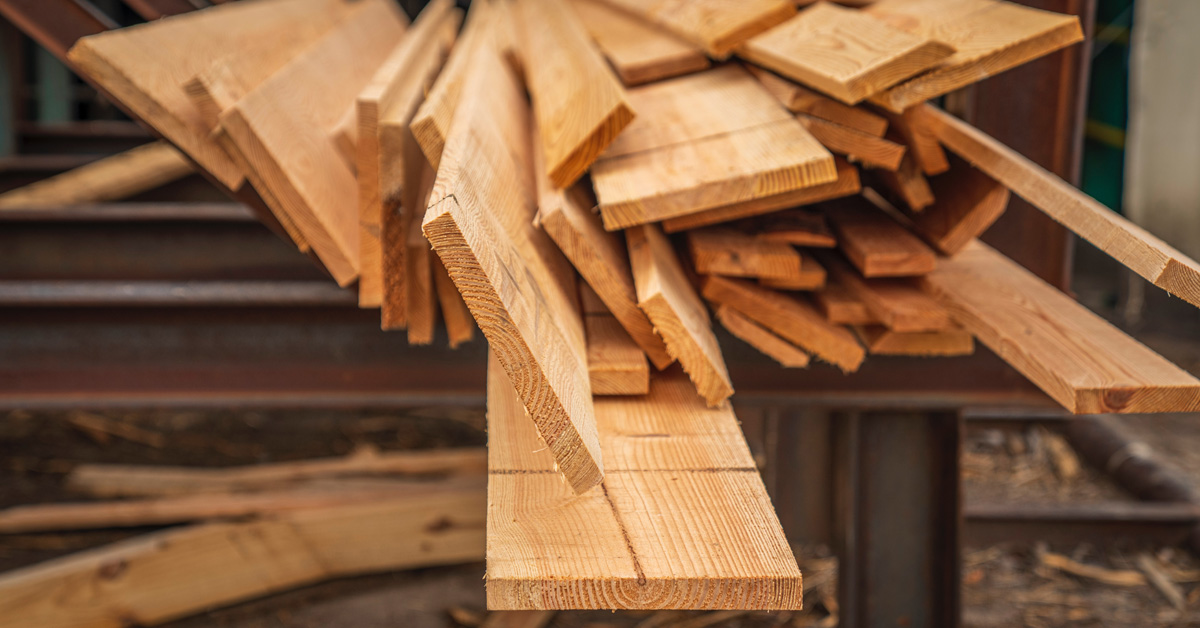
23 Jun 8 Popular Wood Selections for Your Next Building Project
There are so many different wood selections available it can overwhelm the average homeowner. When choosing wood for your next project how can you make sure you choose the best type for the job? Each kind of wood has its benefits and shortcomings depending on your intended use.
There are many, many benefits to using wood in building. Wood is readily available, has a proven track record of durability, is ideal for residential building due to it’s natural insulating properties and soundproofing nature. And finally, and most importantly, wood simply looks good!
If you’re unsure of what wood to use for your next building project we’re here to help. We offer a breakdown of the different wood selections and when to use them, along with the pros and cons. Let us help you make sense of it all, knock on wood.
The Two Categories of Wood Selections for Building
There are two basic categories of wood selections that are useful in building projects. They are soft wood and hard wood. Soft wood comes from conifers, or evergreens, such as pine, cedar, spruce, fir and hemlock. Soft wood is less costly than hardwood and is somewhat more sustainable as conifers tend to grow more rapidly.
Hardwood is derived from trees that are deciduous, meaning they lose their leaves in the fall. These trees are broad-leafed, produce nuts or fruit and are dormant in cold weather. Hardwood is more dense than soft wood and costs a bit more.
5 Soft Wood Selections for Building Projects
Here we offer a variety of the more popular soft wood selections in the Quad Cities area. Depending on your building project you may find any one of these soft woods suitable.
1. Pine
Pine is one of the most popular building materials in the US. It’s stiff and durable and carries an aesthetic people seem to enjoy. That’s why it’s a popular wood for home furnishings. Pine is also shock resistant and lightweight. Best of all, it’s the most sustainable wood selection and can be used in outside construction or inside. Pine is useful for many building projects including moldings, cabinets, and to create a deck or raised porch. The downside is it is more likely to get damaged than other woods.
2. Cedar
There are many varieties of cedar used in building. Cedar is one of the wood selections people and the beauty of the wood itself. However cedar is also a highly durable wood, resistant to mold, mildew and insect damage. Cedar isn’t prone to warping and builders like to use cedar for house siding, especially in areas where the weather is humid and can become inclement. Cedar is great for outdoor use such as siding, decking or shutters. Indoors there are plenty of options for cedar including accent walls, shelving and closets. The only real downside to cedar is that it does require some maintenance to stay durable and lovely.
3. Spruce
Spruce is less popular in soft wood selections than pine or cedar. Much like pine, spruce is used in structural projects, appreciated for its low density. But spruce is prone to cracking and can be difficult to work with. Spruce needs to be treated before you can use it, especially outdoors. Spruce wood rots easily in wet weather or contact with the earth.
4. Fir
This durable wood is among the best wood selections for use in inclement areas, such as the midwest. Fir’s resilient nature and hardy strength makes it a good wood for use in flooring, joinery pieces, trim, decking and benches. The main drawback to fir is that it is quite soft and easily damaged.
5. Hemlock
Of all the softwood selections hemlock is most commonly used for subfloors, framing, sheathing, roofing and stairs. It’s fairly impervious to warping. Hemlock is a great substitute for hardwood because of its strength. This soft wood is fairly affordable and carries stains and paint very well. Although lightweight and strong it does lack the durability of, say, pine or cedar and can be difficult to work with. Hemlock also splinters fairly easily.
3 Best Hardwoods for Your Next Building Project
Hardwoods are typically more durable than soft woods, but do lend themselves to specific building projects. Here are our three most popular hardwoods, their uses and the pros and cons.
1. Maple
Maple wood comes in two types, hard maple and soft maple. As you may expect, hard maple is the more durable of the two. Builders use both types of maple. Maple is commonly used in hardwood flooring and cabinetry, prized for its aesthetic natural beauty. Maple doesn’t require much maintenance and is fairly affordable. It’s not very durable which makes it unsuitable for exterior projects.
2. Oak
Oak comes in two varieties, Red Oak and White Oak. It is one of the most popular wood selections for building houses and other structures. Oak is strong, durable, water-resistant and unaffected by mold or mildew. Oak is heavy and some people have difficulty working with it. But it is flexible and highly suited for exterior cladding.
3. Cherry
The hardwood cherry is among the most coveted wood selections in the US. Inside projects such as flooring, cabinetry, doors and paneling are best for the soft cherry wood. It has a beautiful color, isn’t very stiff, is easy to work with and you can shape and carve it as you like. Cherry lightens when exposed to sun making it not very suitable for exterior projects.
Plenty of Wood Selections and More
When you need wood for your next building project call on the professionals in lumber, Seiffert Building Supplies. We’ve been helping our neighbors in the Quad Cities with their wood selections for well-over a century. We know the trends and we know what works for your project. Contact Seiffert Building Supplies today.

